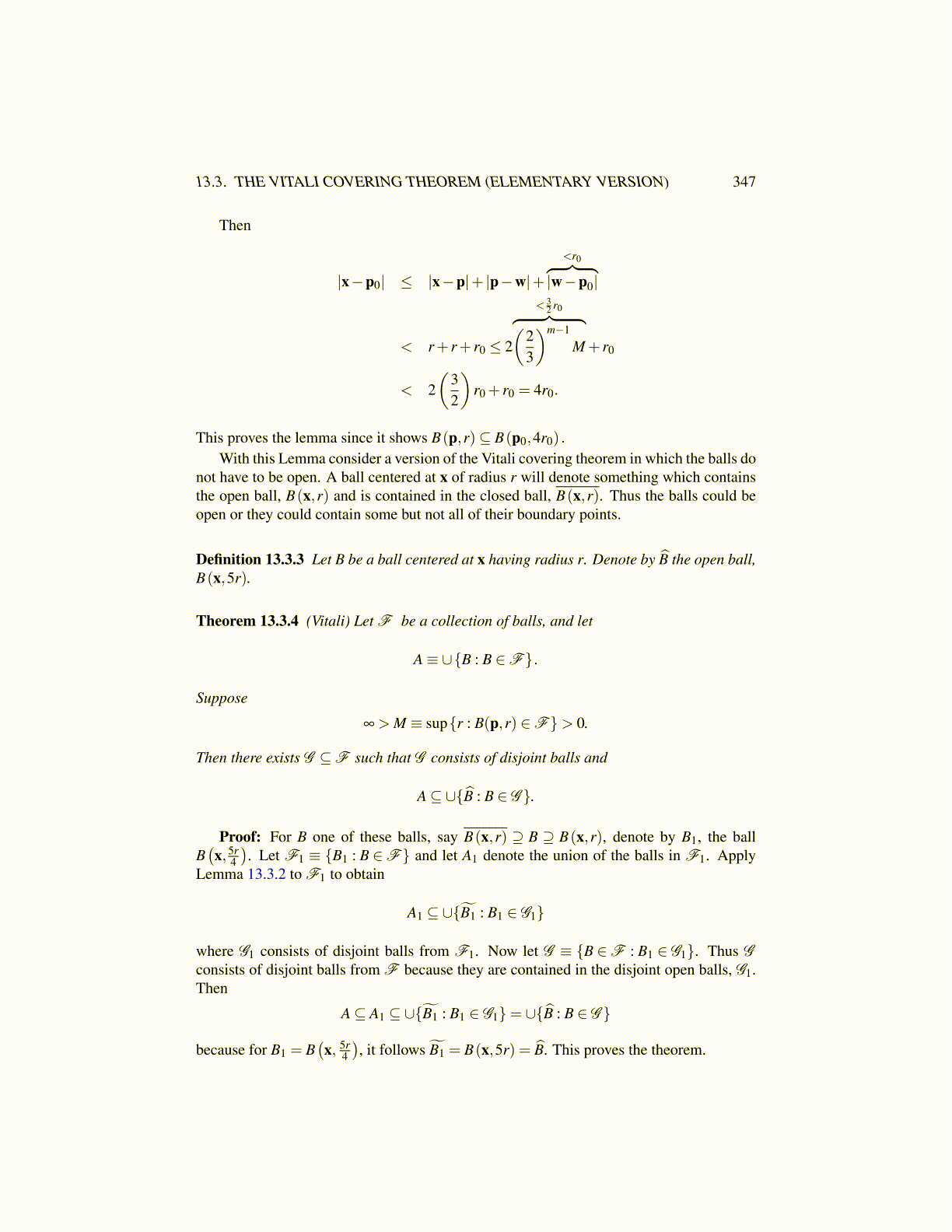
13.3. THE VITALI COVERING THEOREM (ELEMENTARY VERSION) 347
Then
|x−p0| ≤ |x−p|+ |p−w|+
<r0︷ ︸︸ ︷|w−p0|
< r+ r+ r0 ≤ 2
< 32 r0︷ ︸︸ ︷(
23
)m−1
M+ r0
< 2(
32
)r0 + r0 = 4r0.
This proves the lemma since it shows B(p,r)⊆ B(p0,4r0) .
With this Lemma consider a version of the Vitali covering theorem in which the balls donot have to be open. A ball centered at x of radius r will denote something which containsthe open ball, B(x,r) and is contained in the closed ball, B(x,r). Thus the balls could beopen or they could contain some but not all of their boundary points.
Definition 13.3.3 Let B be a ball centered at x having radius r. Denote by B̂ the open ball,B(x,5r).
Theorem 13.3.4 (Vitali) Let F be a collection of balls, and let
A≡ ∪{B : B ∈F} .
Suppose
∞ > M ≡ sup{r : B(p,r) ∈F}> 0.
Then there exists G ⊆F such that G consists of disjoint balls and
A⊆ ∪{B̂ : B ∈ G }.
Proof: For B one of these balls, say B(x,r) ⊇ B ⊇ B(x,r), denote by B1, the ballB(x, 5r
4
). Let F1 ≡ {B1 : B ∈F} and let A1 denote the union of the balls in F1. Apply
Lemma 13.3.2 to F1 to obtain
A1 ⊆ ∪{B̃1 : B1 ∈ G1}
where G1 consists of disjoint balls from F1. Now let G ≡ {B ∈F : B1 ∈ G1}. Thus Gconsists of disjoint balls from F because they are contained in the disjoint open balls, G1.Then
A⊆ A1 ⊆ ∪{B̃1 : B1 ∈ G1}= ∪{B̂ : B ∈ G }
because for B1 = B(x, 5r
4
), it follows B̃1 = B(x,5r) = B̂. This proves the theorem.